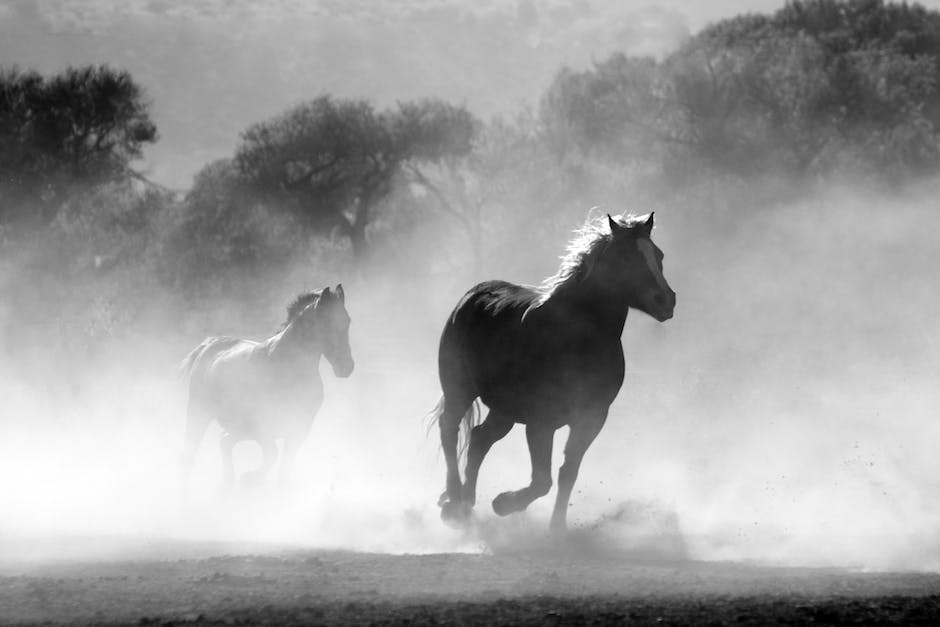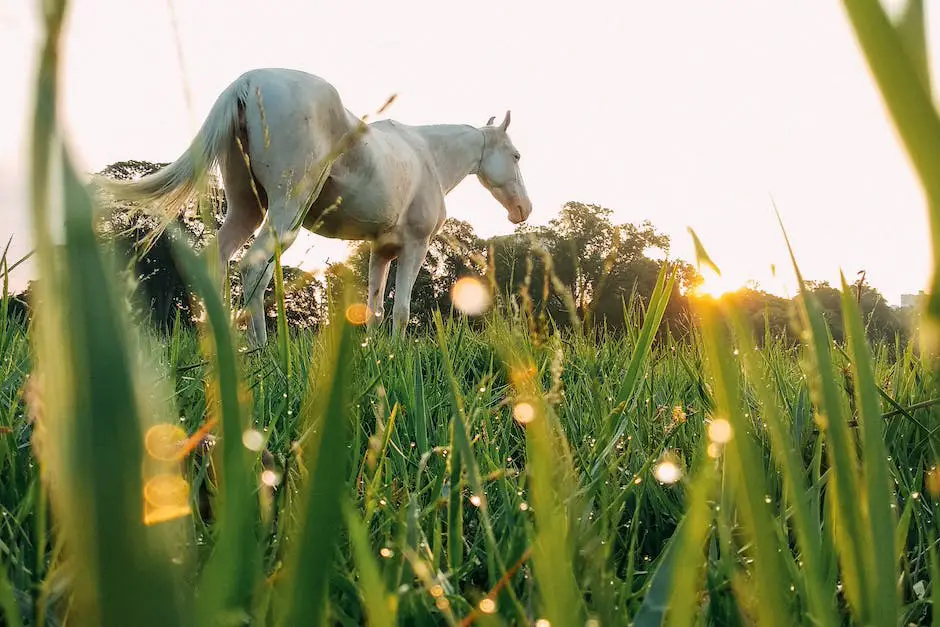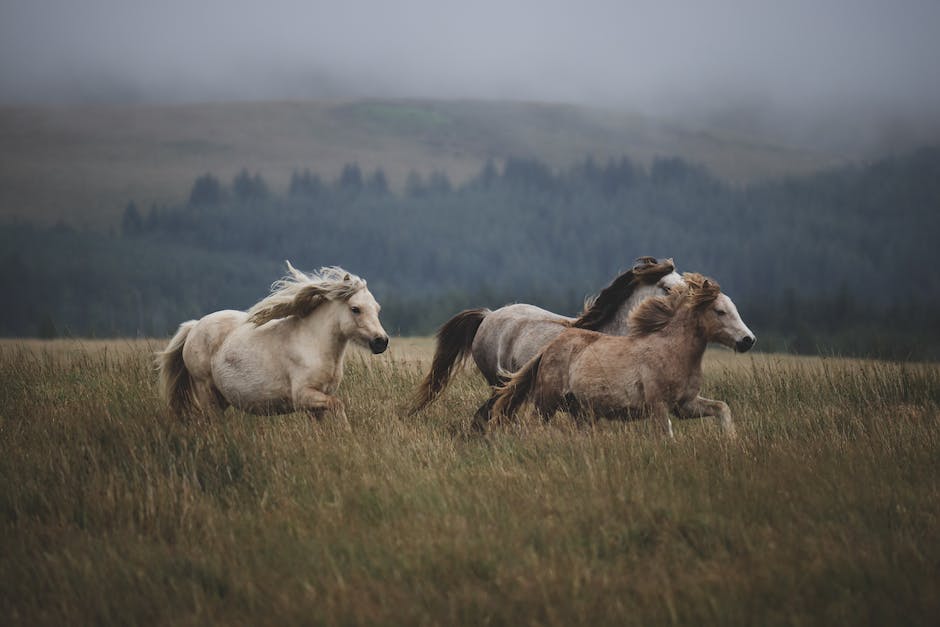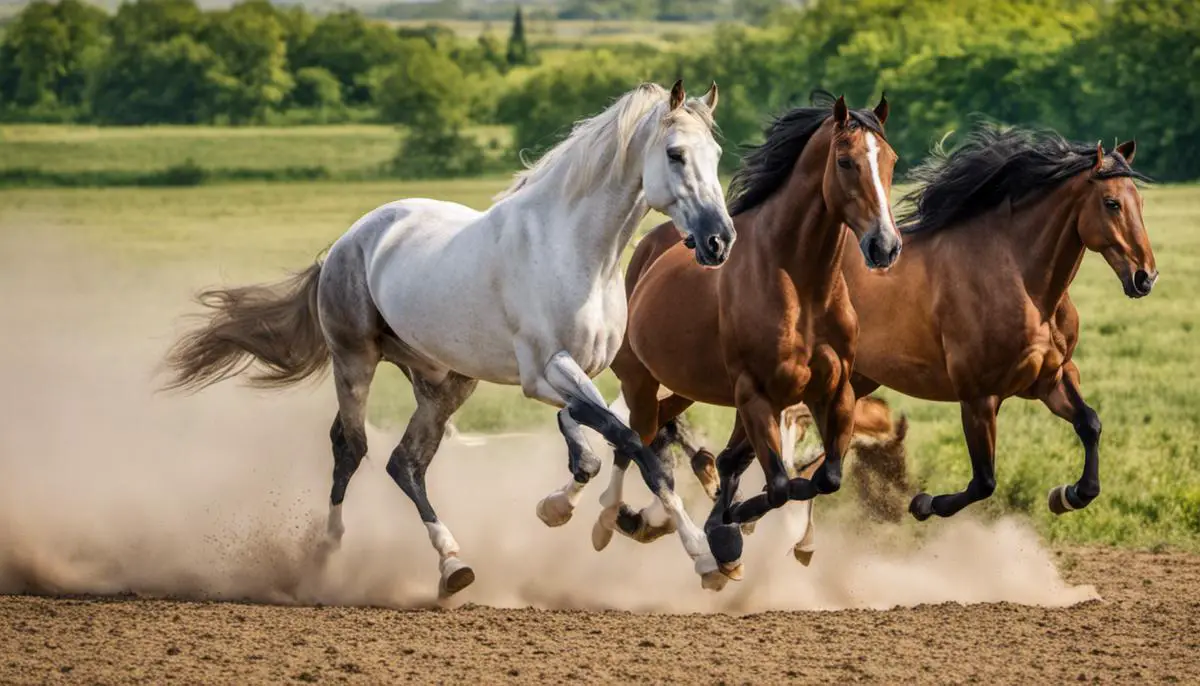In the heart of Europe among its vast grasslands and iconic rivers, resides a notable legacy of the horse kingdom – the Hungarian horse breeds. With deep roots entwined with the ancient cultures of Hungary, these magnificent creatures are the epitome of endurance, agility, and courage. Embedded in their genes are centuries of adaptation, strategic breeding, and a close-knit relationship with human civilization. This chronicle not only traces back to the dawn of Hungarian horse breeds but revolves around their influence on global equine variety, revealing an enchanting blend of history, genetics, and cultural interaction.
Table of Contents (Horspedia)
Historical Background of Hungarian Horses
Early Documentation of Horse Populations in Hungary
Horses have been integral to the Hungarian lifestyle for centuries, beginning as early as the 9th century. Records suggest that the Magyar tribes, who eventually settled in Hungary, brought with them developed equestrian skills, indicating the presence of horses in their culture. In time, the horses bred and reared in Hungary became known for their superior traits, such as resilience, speed, and agility, which were highly valued for various purposes.
Horses as Resource for Work and Transportation
Horses played a crucial role in the livelihood of early Hungarians. The agrarian economy relied heavily on these animals for various farm tasks, such as plowing the fields, hauling heavy loads, and driving and powering machines. Recognizing their value, breeders put a major focus on enhancing the strength and endurance of the local horse breeds, leading to very durable and versatile horses.
In addition to providing manual labor, Hungarian horses were also primary modes of transportation. Their speed and stamina were ideally suited for long distances, making them perfect for journeys across the open plains of Hungary. The role of horses was so significant that there were even laws and traditions relating to their usage. For instance, the ‘Equine Law’ dictated the proper treatment of horses.
Importance of Horses in War
Horses also played a critical role in warfare throughout the history of Hungary. Their strong physique made them ideal for cavalry units, notably in the Medieval period when heavily armored knights would ride into battle. Hungarian horse archers gained a formidable reputation, their speed and agility allowing for swift, guerrilla-style tactics against opponents.
In the 15th century, the Hungarian King Matthias Corvinus established the Black Army, a standing military force that heavily relied on horsemen. The Black Army was famed for its Hussars, fast and agile light cavalry units, who rode Hungarian horses. These horses were noted for their exceptional ability to survive in harsh conditions, requiring less food and care than other breeds.
Selective Breeding and Modern Hungarian Horse Breeds
Selective breeding played a significant role in the development of Hungarian horse breeds. Over centuries, these breeds were refined to emphasize traits like resilience, endurance, and adaptability to the local climate. The Nonius, for instance, is a breed that emerged in the 19th century and is particularly renowned for its strength and endurance.
The Kun, another horse breed unique to Hungary, has a long and storied history. Dating back to the 13th century, this is the oldest indigenous horse breed in Hungary. It played a critical role in sustaining the nomadic lifestyle of the Magyar tribes and contributing to their military might.
Horses in Modern Hungarian Culture
In contemporary Hungary, horses still possess a remarkable significance. They are prominently showcased in cultural events such as traditional horse displays and folk festivities, in addition to being vital participants in modern equestrian sports. A notable Hungarian saying is “Where the Hungarian is, there is the horse”. This demonstrates the longstanding importance of horses in Hungarian culture and national identity.

Genetic Lineage and Characteristics of Hungarian Horses
Heritage of Hungarian Horses
Commonly referred to as the Hungarian Warmblood, the Hungarian horse traces back to the indigenous Magyar horses of the Carpathian Basin. It’s thought that these horses were brought into the region by the migratory Magyars during their Mass Migration into the Pannonian Basin in the 9th century. Through centuries of strategic breeding and cross-breeding, the bloodline of the Hungarian horse has incorporated traits from several European breeds, including Arabian, Turkish, and Western European.
The amalgamation of these diverse influences has given rise to distinct Hungarian horse varieties, such as the Nonius, Shagya, and Furioso-North Star breeds. These breeds each exhibit unique traits attributed to their particular genetic heritage.
Physical Traits of Hungarian Horses
Hungarian horses typically possess a robust and compact body structure. They are characterized by their strong muscular build, deep chest, and powerful hind quarters, traits that make them adept at various equestrian disciplines. They possess a straight or slightly convex profile with wide-set eyes, indicating a gentle disposition. Hungarian horses are generally medium to large-sized, typically averaging between 15 to 16 hands in height.
These distinct physical characteristics align with the requirements of many horse-based activities, making these horses versatile and adaptable. You might commonly see them in dressage, showjumping, endurance riding, or as carriage horses.
Unique Adaptations
A key aspect that sets the Hungarian horses apart from other breeds is their strong endurance and adaptability, traits honed over centuries dealing with the challenging environmental conditions in Hungary. These horses are known for their hardiness, an attribute often seen as being able to withstand harsh climatic conditions, minimalistic shelter, and rough terrains.
Role and Specialized Skills
Historically, Hungarian horses were used for a variety of purposes such as farming, pulling carriages, military use, and as a mode of transportation. They were bred to be hardy, versatile, and reliable, able to cope with a range of tasks and environments.
Over time, Hungarian horses have shown a surprising aptitude for equestrian sports. They have demonstrated significant success in various equestrian disciplines including dressage, showjumping, and particularly endurance riding due to their strength, stamina, and hardy constitution.
Hungarian Horses: A Breed Apart
The Hungarian horse breed stands out from the rest due to its exceptional versatility. In contrast to thoroughbreds, which are renowned for their speed, and Arabians, celebrated for their stamina, Hungarian horses excel in both areas. Furthermore, they deliver multi-purpose utility- a characteristic setting them apart. Their strength, adaptability, and agreeable temperament make Hungarian horses a favorite choice in equestrian circles worldwide.

Impact on Other Horse Breeds
Tracing the Roots of Hungarian Horses
The origin of Hungarian horses can be traced back to the Magyars, a nomadic tribe from the Ural Mountains, situated in present-day Russia and Kazakhstan. The Magyars migrated to present-day Hungary in the 9th century, bringing along their much-prized horses pivotal for their survival and combats. These horses, recognized for their endurance and capacity to travel great distances, played a critical part in the establishment of the Hungarian Empire by the Magyars.
Documented history reveals the variety of uses the Magyar horsemen found for their horses, such as agriculture, transportation, warfare, and sports. The close bond between the Magyars and their horses led to the initiation of an advanced horse breeding program, meant to enrich certain preferred traits in these equine allies.
Cross-Breeding and Influence on Other Breeds
While maintaining their own unique horse breeding culture, the Magyars were also evidently open to cross-breeding their horses with other breeds brought by traders, invaders, or captured during wars. Such practices have resulted in a diverse array of Hungarian breeds, each boasting varying physical attributes and temperamental traits influenced by the outside gene pool.
The Hungarian Warmblood and the Shagya Arabian are two such internationally recognized breeds influenced by cross-breeding. The Hungarian Warmblood, a sport horse breed, is the result of combining the robust Hungarian breed with lighter European breeds. In contrast, the Shagya Arabian has been influenced by Arabian bloodlines, creating an exceptional endurance horse.
Rolling Tides of History and Hungarian Horses
The spread and influence of Hungarian horses were greatly determined by historical events, specifically migration and trade. The geographical centrality of Hungary in Europe made it a hub for trade routes, facilitating the spread of Hungarian horse breeds and their genetic influence.
Moreover, further invasions and migrations into Hungary introduced new breeds, which were then cross-bred with local breeds. For instance, after the Ottoman invasion in the 16th century, Arabian horses were crossed with the local Hungarian breeds, resulting in the afore-mentioned Shagya Arabian.
Exploring Modern Hungarian Horse Breeds
Taking a look at Hungarian horse breeds today, one can see they are highly coveted due to their proven resilience, adaptability, versatility, and effortless maintenance. These honorable traits are the result of a complex genetic mix and hundreds of years of selective breeding, molded by differing severe environmental conditions. The influence of these breeds is deeply embedded in various sports and workhorse breeds across the world, proving their endurance and flexibility.
These breeds continue to thrive and fulfill variegated roles in a plethora of landscapes, from the expansive range of the American West to the desolate sands of the Middle East. Whether in equine sports or agricultural fields, the undying legacy of Hungarian horses perseveres, unfettered by the relentless progression of time.

Current State of Hungarian Horse Breeds
The Current Status of Hungarian Horse Breeds
The endurance, speed, and agility of Hungarian horse breeds are widely respected. Predominant breeds in Hungary include the Nonius, Gidran, and Hungarian Warmblood. Population figures fluctuate depending on the breed. For instance, the Nonius breed remains relatively rare, with the population numbering just over 1,000 horses. The Shagya Arabian, another esteemed Hungarian breed, boasts about 2,000 horses worldwide.
While these breeds are not on the verge of overpopulation, their numbers exhibit signs of rebounding after witnessing drastic declines in the past. Hungarian authorities, breeders, and horse preservation groups have committed to concerted efforts to not only safeguard these breeds but also boost their existing populations through various conservation initiatives.
Role of Hungarian Horse Breeds in Society
Each breed has found its place in Hungarian society and contributes significantly to the culture and economy. Hungarian Warmbloods, known for their agility, speed, and power, often feature in show jumping, dressage, and driving, while the Nonius is commonly used in horse-pulled agriculture, forestry, and carriage driving. The Shagya Arabic is notable in endurance races and leisure riding.
Genetic Studies and Progress in Understanding Hungarian Horse Lineage
Contemporary genetic studies and research have unlocked further knowledge about the lineage and attributes of Hungarian horse breeds. Scientists at the University of Debrecen published a research paper indicating that the genetic diversity of the evolutionarily significant Hungarian horse breeds is significant.
Another scientific study used mitochondrial DNA and Y-chromosome markers to trace the origin of modern horses back to the ancient Scythian nomadic tribes, indicating a Central Asian origin for Hungarian horses and affirming the fact that the Hungarian steppes played a crucial role as a habitat for wild horses during the Middle Ages.
Moreover, understanding the genetic basis of certain traits in these animals could also lead to targeted breeding programs and potential medical advancements. As such, these species are of significant scientific and cultural interest.
Recent advancements in DNA sequencing technology have made it possible to analyze large, complex genomes including those of horses. The DNA of the Nonius breed has been sequenced, revealing the presence of unique genetic sequences not found in other horse populations, affirming that it is indeed a unique breed and highlighting the importance of its conservation.
Preservation and the Future of Hungarian Horses
In light of these findings, preserving these unique branches of equine evolution has become a priority. Several organizations are dedicated to the preservation and propagation of these breeds. For instance, the National Association of Hungarian Horse Breeders works towards the promotion and protection of Hungarian horse breeds. Locally based breeding programs, bolstered by international conservation efforts, are helping increase their numbers slowly but surely.
In summary, the Hungarian horses, whether they be Nonius, Gidran, or Shagya Arabian, are not just horses; they encompass the legacy, tradition, and resilience of Hungary. Their survival and increased recognition are due to combined efforts in conservation, breeding programs, and scientific research, all undertaken to ensure that these majestic beasts continue to thrive in the modern world.

As the pages of these equine chronicles continue to turn, the tale of Hungarian horse breeds embraces a new chapter, marked by a fervent commitment to conservation and a sharper gaze into their genetic architecture. The influence of their lineage persists, imbuing other breeds with their resilient characteristics. Simultaneously, these steeds continue to serve as a testament to the cultural heritage of Hungary, a living emblem entrenched in the nation’s history. As the future unwinds, we look ahead to deepening our understanding and appreciation of these splendid creatures, ensuring their legacy gallops on for generations to come.

